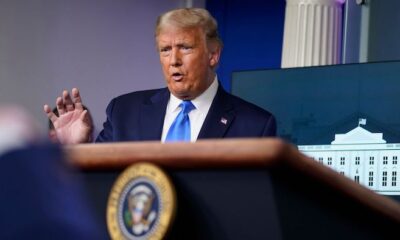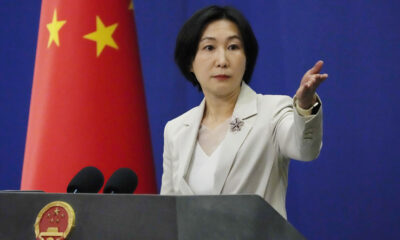Science
U.S. Urged to Forge Quantum Cryptography Framework for Security

The United States is called upon to spearhead a modern initiative similar to the historic Bletchley Park, aimed at addressing the impending challenges posed by quantum computing. This initiative focuses on transitioning to post-quantum cryptography, a necessary step to secure digital communications as quantum technology advances. The urgency stems from the potential of quantum computers to break current encryption methods, fundamentally altering the landscape of cybersecurity.
Bletchley Park, during World War II, exemplified a successful integration of science, engineering, and operational strategies, leading to the decryption of the Enigma Machine. The proposed modern effort, often referred to as the “Bletchley method,” hinges on three critical pillars: robust feedback mechanisms between scientific research, engineering practices, and operational execution; organized alliances; and ongoing testing and verification of systems.
As quantum computers evolve, they will be capable of executing Shor’s algorithm, which can efficiently factor large integers, thereby compromising traditional public-key cryptography. Additionally, Grover’s algorithm will enhance brute-force attacks on symmetric-key systems, reducing their security effectively by half. This potential shift means that the global cryptographic framework requires a thorough overhaul rather than superficial fixes.
To implement this transition, the United States and its allies are encouraged to adopt a comprehensive strategy that interlinks national execution of post-quantum cryptography with an allied certification framework. This approach aims to establish a coalition focused on ensuring that post-quantum cryptography is the default standard, facilitating interoperability among systems globally.
Track One: National Implementation
The first phase of the proposed strategy involves the development of a domestic implementation plan, reflecting the rapid flow of innovations into practical applications seen at Bletchley Park. This includes the establishment of “Ultra at Home”, a program designed to operationalize post-quantum cryptography based on standards set by the National Institute of Standards and Technology (NIST).
The Office of Management and Budget has already outlined preparatory obligations, and the next step is to create measurable milestones for adoption. Agencies are urged to set quarterly targets for the deployment of NIST’s new algorithms, focusing on critical areas such as Transport Layer Security and Internet Protocol Security. Public reporting on progress will be essential to maintain transparency and accountability.
Further actions include ensuring that only validated cryptographic modules are procured, automating testing processes, and rigorously evaluating deployed technologies. Agencies like the Cybersecurity and Infrastructure Security Agency will play a pivotal role in establishing a government-wide cryptography bill of materials, facilitating the transition to validated post-quantum cryptography.
Track Two: International Collaboration
The second phase emphasizes the importance of developing interoperable standards to prevent fragmentation in global digital infrastructure. The risk of a “quantum splinternet”—a scenario where incompatible national encryption systems emerge—poses a significant threat to international cooperation and economic stability.
To counter this, a collaborative effort among the United States, the European Union, the United Kingdom, Canada, and Japan is essential. These nations should prioritize post-quantum cryptography as the standard for public-facing services and align on certification protocols. The proposal includes the establishment of a trans-Atlantic post-quantum cryptography profile, promoting mutual recognition of compliance standards across allied markets.
Additional measures to foster international cooperation involve creating a clearinghouse for cryptographic failures, enabling cross-border responses to security breaches. The G7 countries are encouraged to consider establishing an opt-in certification club to facilitate compliance and encourage adherence to agreed standards.
As the urgency of transitioning to post-quantum cryptography intensifies, the United States is positioned to demonstrate leadership by executing these strategies domestically. This proactive approach can set a global precedent, ensuring that as quantum technologies advance, the framework for cybersecurity remains robust and secure.
Mauritz Kop, the founder of the Stanford Center for Responsible Quantum Technology, advocates for these measures, emphasizing the importance of ethical governance in the quantum realm. By prioritizing security and collaboration, the U.S. can pave the way for a safer digital future, leveraging the lessons learned from the past to address the challenges of the quantum age.
-

 Entertainment2 months ago
Entertainment2 months agoAnn Ming Reflects on ITV’s ‘I Fought the Law’ Drama
-

 Entertainment3 months ago
Entertainment3 months agoKate Garraway Sells £2 Million Home Amid Financial Struggles
-

 Health2 months ago
Health2 months agoKatie Price Faces New Health Concerns After Cancer Symptoms Resurface
-

 Entertainment2 months ago
Entertainment2 months agoCoronation Street’s Carl Webster Faces Trouble with New Affairs
-

 Entertainment2 months ago
Entertainment2 months agoWhere is Tinder Swindler Simon Leviev? Latest Updates Revealed
-

 Entertainment3 months ago
Entertainment3 months agoKim Cattrall Posts Cryptic Message After HBO’s Sequel Cancellation
-

 Science3 weeks ago
Science3 weeks agoBrian Cox Addresses Claims of Alien Probe in 3I/ATLAS Discovery
-

 Entertainment2 months ago
Entertainment2 months agoOlivia Attwood Opens Up About Fallout with Former Best Friend
-

 Entertainment3 months ago
Entertainment3 months agoMarkiplier Addresses AI Controversy During Livestream Response
-

 Entertainment3 months ago
Entertainment3 months agoMasterChef Faces Turmoil as Tom Kerridge Withdraws from Hosting Role
-

 Entertainment4 months ago
Entertainment4 months agoSpeculation Surrounds Home and Away as Cast Departures Mount
-

 World2 months ago
World2 months agoCole Palmer’s Mysterious Message to Kobbie Mainoo Sparks Speculation





















